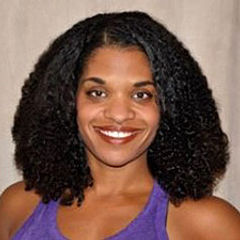Last Updated January 10, 2025 (originally published March 23, 2020)
|
Key Takeaways This blog explores the best fitness programs for women across the lifespan, from strength training for bone density in your 20s to exercising to prevent falls later in life. Along the way, you’ll find strategies for building cardiovascular health and maintaining lean muscle mass and fitness tips for women during menopause. While living a physically active and healthy lifestyle is vital at any age, you’ll learn why it may be important to shift your focus as you grow older in order to maximize your results. |
Physical activity is an important health habit during every decade of life. Unfortunately, fewer than one in four Americans meet the current physical activity guidelines of 150 to 300 minutes of moderate-intensity aerobic activity or 75 to 150 minutes of vigorous-intensity aerobic activity, along with at least two sessions of muscle-strengthening activity per week. Furthermore, women are less likely than men to get the recommended amount of physical activity. Keep reading to learn why physical activity is critical to women’s health across the lifespan.
Fitness in Your 20s: Focus on Maintaining Healthy Bones
Our bones provide a protective framework for our bodies. Bone is living tissue and during childhood and adolescence, new bone is added frequently to the skeleton. These “deposits” allow bones to become stronger and heavier. For most people, peak bone mass, which is the maximum amount of bone a person will ever have, occurs in the third decade of life. Once peak bone mass is achieved, bone resorption, which is the process of bone mass being lost at a faster rate than it is formed, becomes more likely. Compared to men, women are disproportionately impacted by bone degenerative diseases such as osteoporosis.
The National Institute of Arthritis and Musculoskeletal and Skin Diseases encourages lifestyle behaviors such as consuming foods rich in vitamin D and calcium and avoiding smoking and excessive alcohol intake to reduce the risk of bone loss and degenerative bone diseases. Exercise is also a key player in bone health. You can attenuate the process of bone degeneration by including weight-bearing exercises in your physical activity routine. Brisk walking, hiking, stair climbing, weightlifting and high-impact sports such as tennis are all great activities for maintaining and improving bone health.
Fitness in Your 30s: Achieve Ideal Cardiovascular Health
Heart disease is the leading cause of death globally for both men and women. However, women have poorer health outcomes after heart attack and cardiovascular disease diagnoses. Researchers are working to understand how and why heart disease affects men and women differently, but most believe the reasons are multifaceted and include factors related to the timing of diagnosis, exposure to both first- and second-hand smoke across the lifespan, and recognition of heart disease symptoms. Like many other chronic diseases, heart disease develops over time and often without many warning signs. The American Heart Association’s current strategy for reducing the risk of all cardiovascular diseases is called Life’s Essential 8 and focuses on eight key measures for improving and maintaining cardiovascular health, which are broken down into health behaviors and health factors:
Health behaviors
- Eat better.
- Be more active.
- Quit tobacco.
- Get healthy sleep.
Health factors
- Manage weight.
- Control cholesterol.
- Manage blood sugar.
- Manage blood pressure.
Ideal cardiovascular health is key for reducing your risk for heart disease. Prioritizing your cardiovascular health while in your 30s can reduce your risk for heart disease later in life.
Fitness in Your 40s: Maintain Lean Muscle
Sarcopenia, or age-related muscle loss, begins around age 40 and continues at a rate of about 5 pounds (2.3 kg) per decade. It’s easy to become overly concerned with the aesthetics of muscle loss, such as weight gain and changes in body size and shape, but the more important issue is functional capacity. When we lose too much muscle, it becomes difficult to perform activities of daily living without assistance (e.g., reaching, lifting and maintaining personal hygiene).
While conventional wisdom has led many to believe that muscle loss is a normal part of getting older, exercise science literature suggests otherwise. For example, a recent article in the Journal of Physiology suggests that the detrimental effects of aging can be partially mitigated by lifelong recreational exercise. In particular, being recreationally active across the lifespan can preserve muscle fibers. To improve muscular fitness and prevent muscle loss, the National Strength and Conditioning Association recommends performing resistance training on two to three days per week, at an intensity of 50 to 85% of one-repetition maximum (1-RM), for two to three sets of one to two multijoint exercises per major muscle group, and for six to 12 repetitions. Focus on performing multijoint exercises and achieving balance by targeting both agonist and antagonist muscle groups (e.g., quadriceps and hamstrings). Power exercises may also be particularly important for older adults because this element of muscular fitness declines most rapidly with age. For power training, older adults can use 40 to 60% of their 1-RM performed at higher velocities.
Fitness in Your 50s: Stay Fit and Active Through Menopause
Menopause occurs when the ovaries stop making estrogen and a woman stops having menstrual periods. The average age of onset is 51 years. In addition to hormonal and reproductive changes, many women report changes in their sleeping habits and energy levels during this time. The American College of Obstetricians and Gynecologists recommends regular exercise as part of a healthy lifestyle pattern for managing some of the discomforts and health-related changes that may accompany menopause. Mind-body exercise such as yoga and any other type of exercise that improves subjective well-being can be particularly beneficial.
Fitness in Your 60s: Exercise to Prevent Falls
Physical activity is one of the most important habits you can adopt to maintain health and quality of life across the lifespan. In the seventh decade of live, fall prevention becomes paramount. One in four older adults fall every year, and for adults aged 65 and older, falls are the leading cause of fatal and nonfatal injuries and the leading cause of injury-related death. Women are at a greater risk for falls than men.
Fall-prevention programs should include neuromotor exercises that challenge balance and coordination, improve muscular fitness, and train gait. Click here to learn more about incorporating balance training into your exercise routine.
If you’re interested in providing a more holistic approach to improving your female clients’ fitness regimen and overall health, check out Strategies for Training Female Clients – Course Bundle (worth 0.4 ACE CECs). The following courses are included in this bundle:
- Weightlifting for Women
- Training Female Clients Through Different Life Stages
- Training women for Optimal Health and Performance




 by
by 







 by
by